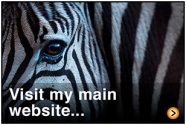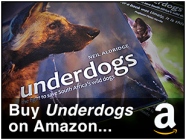
The Limpopo Valley along South Africa’s northern border with Botswana and Zimbabwe is home to a small number of lions. Yet, there is enough prey and natural habitat to sustain more. So why do they fare so badly here? The truth is that this small population sums up a continent-wide problem – Africa has lost almost 90% of its lions in the last 20 years. Hunters are permitted to shoot them for sport, game reserve managers can euthanise those that are supposedly surplus to requirement and management plans for the species are largely insufficient and geographically patchy.

‘Fat Boy’ is the pride male of a small group of lions living within the eastern section of South Africa’s Mapungubwe National Park, which lies within the Limpopo Valley. When Fat Boy disappeared over the border into neighbouring Zimbabwe and word spread that a licence had been applied for by a local hunter to shoot the lion, it was feared that the Limpopo Valley had lost another pride male. The problem with losing a dominant pride male is that while there may be other males ready to move in to the territory and take over, the new arrivals are likely to kill any young cubs to assert the dominance of their own genes. What’s more, sub-adult male lions are also pushed out of the pride’s territory to fend for themselves, often pushing them to the edges of protected areas into the human conflict zone and forcing them into a life on the run.

Thankfully, Fat Boy returned from his foray into new territory unscathed. However, a farmer in the Limpopo Valley was recently fined R55,000 after being found guilty of baiting and illegally shooting a male lion on his land (unfortunately for the farmer the lion was wearing a GPS collar). And while that R55,000 has been invested straight into the Tuli Predator Project who have worked hard to protect these lions for years and who took an active role in the prosecution, the outcome should be seen as less than ideal. A financial settlement with no sentencing surely sets a precedent that the life of a breeding adult of a vulnerable and declining species can be simply paid-off?
This settlement may not be ideal but it is not surprising. Fuelled by the ‘Big Five’ marketing concept and the opportunity to make money from international safari-goers keen to see these big cats, many landowners across Africa have bought and sold lions purely with their own economic interests in mind. But, in an ironic twist, has the inception of the ‘Big Five’ and the marketing machine popularising Africa’s wildlife lead to a micromanaged and financially selfish approach from landowners that has damaged the lion population forever?

With lion numbers falling, Africa brimming with development and protected habitats being cut-off by human infrastructure, lion specialists Susan Miller and Dr Paul Funston are aiming to establish a better understanding of the impacts of micromanagement (such as inbreeding) on lion populations on small reserves in South Africa. But will landowners and reserve managers be prepared to enter into a metapopulation model, for example, or will ownership of ‘their’ lions get in the way of mapping a recovery for the species? And can the lion even make a recovery like that other great icon of African wildlife, the Elephant or, as a predator, will it continue to come second to human needs in a booming continent?
Visit my main website at www.conservationphotojournalism.com
























